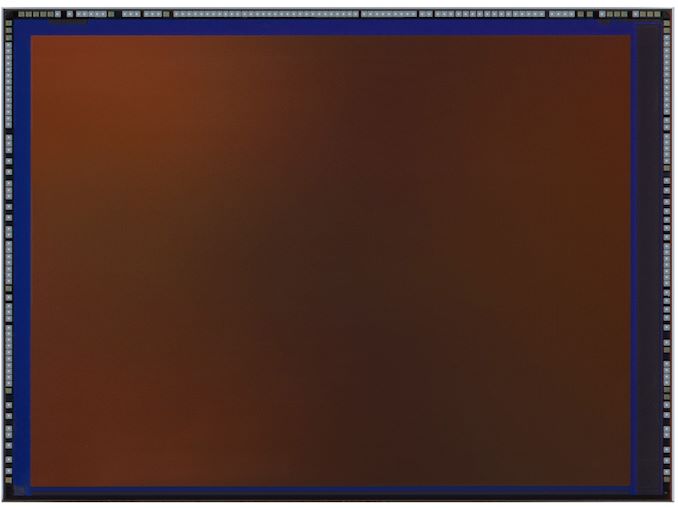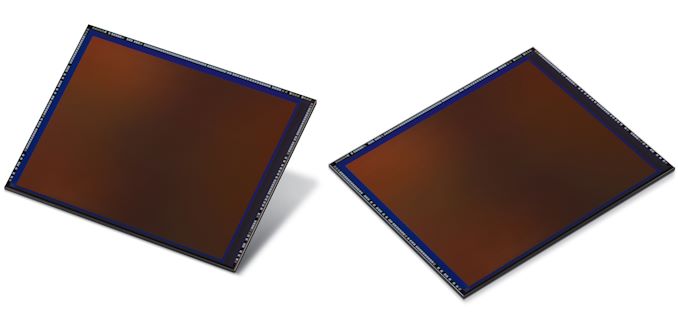Samsung Unveils ISOCELL Bright HMX 108 MP Sensor for Smartphones
by Anton Shilov on August 13, 2019 3:00 PM EST- Posted in
- Smartphones
- Samsung
- Xiaomi
- Sensor
- HMX

Samsung this week has introduced the industry’s first 108 megapixel image sensor for smartphones. The Samsung ISOCELL Bright HMX promises to allow smartphones to take photos comparable to those from DSLR cameras. One of the first handsets to use the new sensor will be a phone from Xiaomi.
Samsung’s flagship 108 MP ISOCELL Bright HMX is a fairly large 1/1.33-inch image sensor for smartphones. Thanks to the combination of its sheer size and the underlying sensor technology, the Bright HMX is designed to absorb more light than existing image sensors, allowing it to offer better photos even in low-lit conditions. The sensor also supports the company’s 2x2 pixel-binning Tetracell technology, which merges four pixels into one to produce brighter 27 MP photos. In addition, the ISOCELL Bright HMX features Samsung's Smart-ISO capability, which uses high ISOs in darker settings to reduce noise and low ISOs in brighter settings to improve pixel saturation.
When it comes to video, the HMX supports recording at up to 6K (6016 x 3384) resolutions at 30 frames per second, with the same field-of-view as photo mode.
One thing to note is that while the 108 MP ISOCELL Bright HMX sensor can offer a rather high image resolution, it's not a complete system in and of itself. Smartphone manufacturers will need to use SoCs that can handle such a large sensor, both in terms of consuming the sensor's 108 MP output, as well as offering the processing power (ISP and otherwise) to handle all the post-processing expected for a modern smartphone camera.
Samsung plans to begin mass production of the 108 MP ISOCELL Bright HMX image sensor later this month. Meanwhile, Samsung has confirmed that partner Xiaomi will be the first to use the sensor, though the companies are not saying what that first device will be.
Related Reading:
- Samsung Announces Galaxy Note10 & Note10+: A Redesign With Feature Disparity
- Samsung Unveils 64 MP & 48 MP ISOCELL Bright Image Sensors for Smartphones
Source: Samsung











39 Comments
View All Comments
shabby - Tuesday, August 13, 2019 - link
Wow almost 4x the size of the sensor in the note 10, impressive.ishould - Tuesday, August 13, 2019 - link
With that many megapickles I wonder if we may start seeing 3x3 pixel binning instead 2x2Tams80 - Tuesday, August 13, 2019 - link
Well, let's do some basic maths then shall we?2x2 = 4 pixels. 108/4 = ... wait for it... 27.
3x3 = 9 pixels. 108/9 = 12.
Considering the Nokia 808 PureView produced 5 MP or 8 MP images after pixel binning, then this new sensor could be used with 3x3 pixel binning. The sensor size isn't as big though...
quiksilvr - Tuesday, August 13, 2019 - link
Isn't it sad that a smartphone that came out 7 years ago has a larger sensor than today? That PureView sensor is 1/1.2 and they had a 1" sensor on the Lumix DMC-CM1 and that was "only" a 20MP sensor. Give me a 12MP 1" sensor and I will be happy. No pixel binning, no fuss.Valantar - Tuesday, August 13, 2019 - link
A standard-for-smartphones ~28mm lens for a 1" sensor built to fit the thickness of a modern smartphone would have absolutely horrible distortion and likely not be usable. No thanks. A 10mm camera bump doesn't tempt me either.808Hilo - Wednesday, August 14, 2019 - link
val: They could design a basic hump with a wide angle lens acting as sensor cover and a magnetic speedbooster ring that acts as interface with a Nikon, etc.Adapter ring making FF lenses workable. Every phone from a 855 chip set up has better hardware than 99% of all cams.
Nikon, Canon etc will just be Android apps in the future unless they start making their own phones.
So far they have refused and lost gigantic marketshare and sales. This one inch sensor could be their salvation...or not.
FunBunny2 - Thursday, August 15, 2019 - link
"A 10mm camera bump doesn't tempt me either. "whatever happened to those Moto phones with attachable lenses?
saratoga4 - Tuesday, August 13, 2019 - link
>Isn't it sad that a smartphone that came out 7 years ago has a larger sensor than today?Not really, the width of the sensor format directly determines the camera thickness. The 808 was well over 2x as thick as a today's phones due to the huge camera. There is no need to make such gigantic optical systems with today's sensors. You can get much better performance out of something more reasonable in size.
Tams80 - Wednesday, August 14, 2019 - link
The 808 PureView was far more ergonomic than most of today's phones. Even with the camera hump, it actually sat fairly well on a table as well.I know it's a very small niche, but that phone really was fantastic. It's quite sad that we've ended up going much more for style over function as well. The OSes today (well Android at least) have no excuse for ever running slowly, yet they do. The Nokia Symbian and Maemo/Meego devices were far more resource efficient. The 808 also had a dedicated ISP for the camera, which helped a lot.
Lord of the Bored - Wednesday, August 14, 2019 - link
More reasonable? Everything anyone offers is way too thin. If decent optics is what it takes to fatten a phone up to a reasonable size, then... that's a double-win.